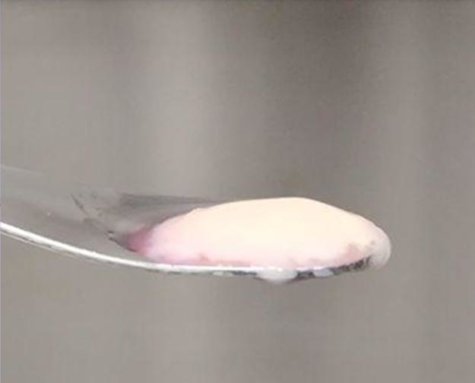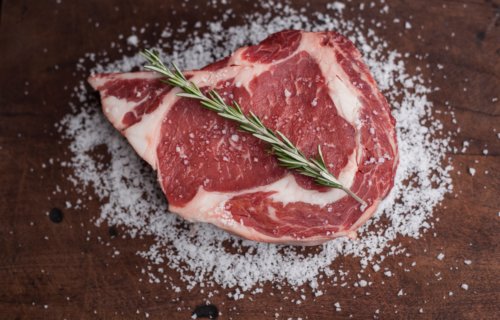HAMILTON, Ontario — Usually when you go to a steakhouse, the waiter asks how you’d like your meat cooked. Researchers from McMaster University say they may soon be asking how you’d like your steak “tuned.” The team has developed a new form of lab-grown meat that they say has a more natural taste and texture than other alternative meats.
Not only does their creation give more of that “real meat” experience, the study finds this new approach also allows the eater to have the exact amount of fat content and marbling they want in that particular cut of “meat.”

McMaster University)
“We are creating slabs of meat,” researcher Ravi Selvaganapathy says in a media release. “Consumers will be able to buy meat with whatever percentage of fat they like – just like they do with milk.”
How does lab-grown meat work exactly?
Selvaganapathy and Alireza Shahin-Shamsabadi, both in McMaster’s School of Biomedical Engineering, developed a way to create lab-grown meat by stacking thin sheets of cultivated muscle and fat cells together. This technique is a new spin on the method scientists use to grow tissue for human transplants.
These sheets of living cells are about as thin as a sheet of printer paper. They are first grown in a lab culture and then concentrated on growth plates. From there, researchers peel them off and stack them all together. Selvaganapathy says these sheets naturally bond to each other before the cells start to die.
The team says that their tuning process also gives their meat substitute an advantage over other products.
‘Felt and tasted just like meat’
Researchers tested their meat-making process using cells from mice. Although they didn’t actually cook and taste any “mouse meat,” the team did eventually cook and try a sample of meat coming from rabbit cells.
“It felt and tasted just like meat,” Selvaganapathy reports.
Study authors say there is no reason to doubt that their process will not work with growing beef, pork, or chicken in the future. The team adds that their stacking model would also work in a large-scale production setting as well.
Viable alternative to prevent shortages
Selvaganapathy and Shahin-Shamsabadi say the worldwide meat supply crisis inspired them to look into growing alternative food sources. The duo notes that the current demand of meat puts a strain on land and water resources and also contributes to greenhouse gases.
“Meat production right now is not sustainable,” Selvaganapathy contends. “There has to be an alternative way of creating meat.”
The McMaster team have already formed a start-up company so they can commercialize the meat-making process. They argue that their new product has the best chance of acceptance among meat eaters; since theirs promises meat and fat made-to-order.
The study appears in the journal Cells Tissues Organs.
